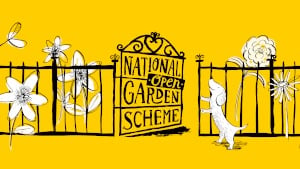About Higher Cherubeer
Higher Cherubeer is a mature one and three quarter acre garden which has been developed since 1991. Initially it was planted up with fast growing native trees and basketry willows to provide shelter and structure for future plantings. The garden, now sheltered, provides a wide range of micro climates and is planted for 12 months of interest.
The season starts in January and February with the woodland paths lined with around 400 named snowdrops, Cyclamen species, hellebores and winter flowering shrubs.
March continues with a succession of spring flowering bulbs and herbaceous including Erythroniums, Anemones, Crocus, Scillas, Brunneras and Pulmonaria. In poor weather the alpine house provides refuge and is used to display plants in season.
In early summer the herbaceous planting takes over with hardy Geraniums, Astrantia, Dicentra, Aquilegia and continues with roses, Clematis and lilies.
By late summer and early autumn the Cyclamen National Collection,ferns and Autumn flowering bulbs, including snowdrops continue the show right through till Christmas.
With the high rainfall in the SW, gravel and paving form an important all weather route within the garden. To aid drainage and provide structure Tom has levelled much of the garden with drystone terracing in local style using local stone. Wildlife is encouraged and nectar and pollen rich flowers have been chosen. Nest boxes, bird feeders, log piles are all included to provide a rich habitat for native species. There is evidence of dormice in the hedge banks and barn owls nest locally.

.jpg)
.jpg)
.jpg)
.jpg)
.jpg)
.jpg)
.jpg)
.jpg)
.jpg)
.jpg)
.jpg)
.jpg)
.jpg)
.jpg)
.jpg)
.jpg)
.jpg)
.jpg)



.jpg)
.jpg)
.jpg)
.jpg)
.jpg)
.jpg)